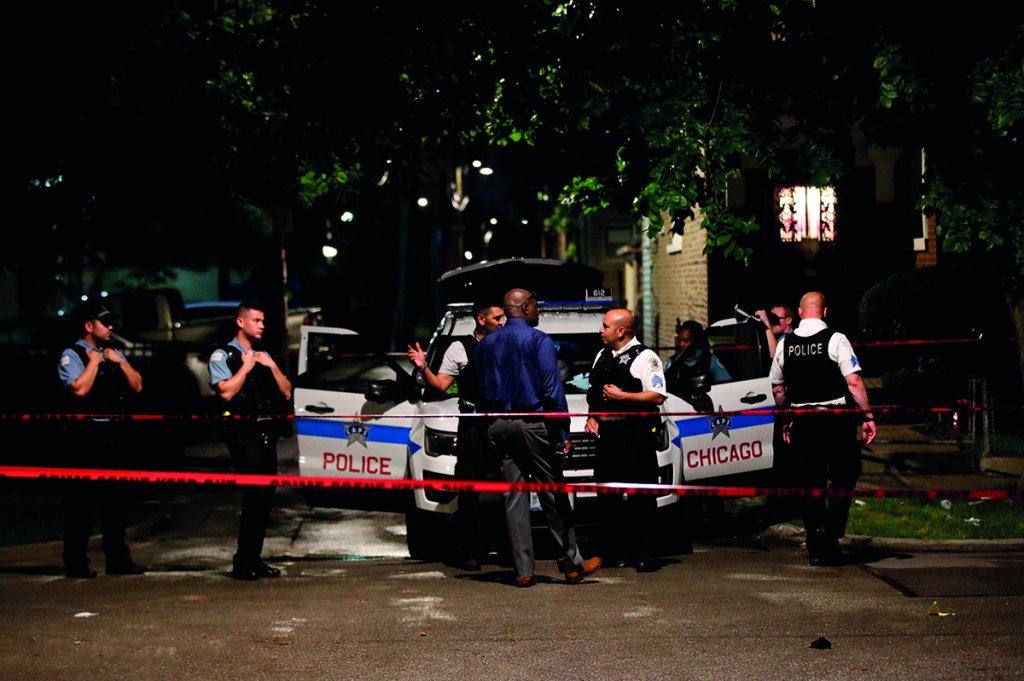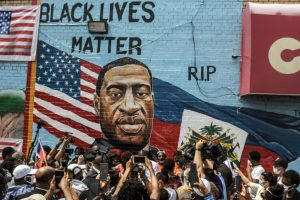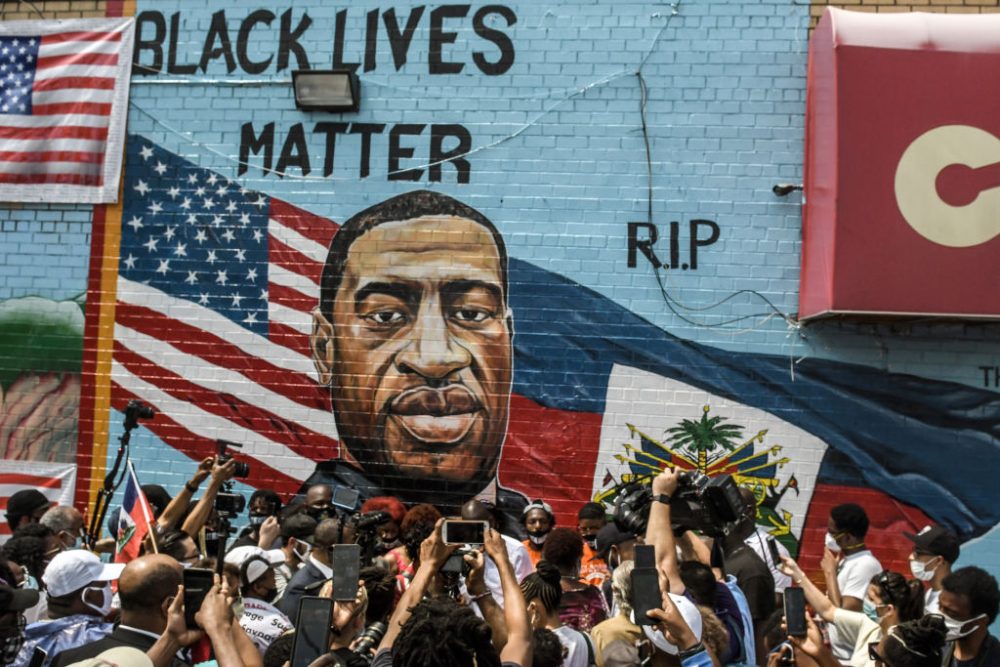‘I wonder if you might do a “notebook” on living in Chicago at the moment,’ my London-based editor inquired via email. ‘The latest crime figures are quite shocking.’ I asked which shocking crime figures he had in mind. We have quite a selection.
More than 4,000 people were shot in Chicago in 2020 and a few dozen short of 800 were murdered — an increase of more than 50 percent on 2019’s tally. For the past few years almost as many people have been slain in Chicago as in New York and Los Angeles combined, although those cities taken together have four times the population.
Then again, perhaps my editor was thinking of carjackings, up 283 percent in January compared to a year ago. Lest you think that’s a function of small numbers, we had 77 carjackings in January 2020 vs 218 this year, an average of seven per day. Typically the perpetrators are teenagers with guns. In one case, the offender was 12.
Or possibly — even in the age of the internet, sometimes news travels slowly — my editor had just now heard about the mob violence in the wake of a police shooting last August, when hundreds of rioters converged on downtown Chicago, including the upscale Michigan Avenue shopping district, and spent hours smashing windows and hauling off whatever they could carry.
So potentially there were heaps of shocking crime stories I might write about. Just one problem. My editor was thinking I might cast my report in the form of a diary, evidently believing I spend my days dodging bullets. But I don’t. My personal experience of crime in recent years has been close to nonexistent. That’s true of most people who live in middle-class neighborhoods in Chicago — and to be clear, I mean within the city limits, not the suburbs.
It hasn’t always been this way. My neighbor Mike is a fellow journalist I’ve known for years. One morning in 1982, while he and his wife Betsy were at work, a burglar broke into their house, choked their housekeeper to death in a bathtub, and set the place on fire. Mike arrived home to find a fireman emerging from an upper-story window with his infant daughter. She suffered from smoke inhalation but survived. My then-girlfriend Mary and I helped Betsy and Mike inventory their home for the insurance adjusters. A few years later, married now with kids and in the market for a bigger place, we looked at a dilapidated house and realized it was two doors up from Betsy and Mike’s. We bought it anyway.
A few months after we started work on the house — I’d persuaded two dozen friends to help me gut the place — it was broken into by burglars, who stole tools, building supplies, and two antique mantelpieces worth several thousand dollars. I wired up the house with security lights and hired a homeless man to live in the basement with his two dogs to keep watch when the building was otherwise unoccupied. He did this capably except when drunk. Nothing else was stolen.
Moved in at last, I was in my upstairs office one day when I heard a popping sound and looked out the window to see two men running down the street shooting pistols at each other. I called the police; a squad car arrived about 20 minutes later with a single officer in it, by which time the shooters were long gone. I guess it had been a busy day. The area in those years wasn’t unusually dangerous as city neighborhoods go but it had its share of corner drug dealers, drive-by shootings, random gunshots in the alley — that kind of thing. Over time the frequency of alarming incidents diminished. It’s been more than 40 years since I’ve had a gun pulled on me or my car stolen. Life has been good.
The opposite has been true on the West and South Sides of Chicago, where most of the city’s black people live. Crime, especially homicide, in these areas was bad to start with, briefly improved, then starting a few years ago it got worse. The great majority of murder victims are young black men.
I asked my data-scientist friend Mike to generate a map plotting the location of all Chicago homicides in 2020. On the North Side where I live there was a scattering of dots. The West and South Sides were crammed. In my neighborhood there were two homicides last year. In Austin, the West Side community where I grew up, there were 83.
Last spring, thinking I might invest in rental property on the West Side — the fringes of the area have been gentrifying — I called a handful of longtime homeowners there, hoping they might tell me the neighborhood was on the upswing. They didn’t. Without exception they related harrowing tales — people shot to death on their front porches, openair drug markets, a homeless man chopping a hole in the wall of the garage next door and taking up residence inside.
A common observation is that there are two Chicagos — one prosperous and reasonably secure, the other poor and violent. What was novel about the year just past was the periodic irruption of the violent Chicago into the peaceful one.
The surge in carjackings is the most recent example of this, but the August looting spree downtown, which left the streets in the wealthiest part of the city filled with shattered glass, was what really rattled people. Add to that the pandemic, which has shut down virtually everything people enjoy about urban life and left the city eerily quiet. Many now fear we face an existential threat. I’m not saying we don’t. But — and here I depart from the general run of opinion in Chicago — it’s not primarily because of crime or disease. All pandemics eventually end, and homicides have spiked around the country. In New York last year murders rose 45 percent and in Los Angeles 38 percent. No one is sure why, but the problem isn’t local to Chicago.
The persistently high, if fluctuating, murder rate in the city’s black community is another matter. The cause is imperfectly understood but not fundamentally all that mysterious.
A black city planner I know blames the demolition of Chicago’s vast stock of high-rise public housing in the 2000s without adequate provision to replace it. The violent street gangs that had lived in the projects dispersed into black neighborhoods elsewhere in the city, including many that, till then, had been middle class and stable.
The arrival of gang members put an end to that. Crime soared; residents fled. The number of black people in Chicago declined by more than 180,000 between 2000 and 2010 and has fallen an additional 100,000 since then — more than in any other US city including Detroit. It’s projected to drop yet another 135,000 by 2030, to 665,000, a little over half its historical peak.
No straight line can be drawn between the catastrophic decline of Chicago’s black community, including the loss of much of its middle class, and the increase in murders and other violent crime in the same era. However, one may reasonably conjecture that the first trend has something to do with the second.
Still, crime as such isn’t the major threat facing Chicago. Rather, it’s the concatenation of problems all happening at once. If one sets aside the crisis in the black community, which I concede is like ignoring the fact that the house is on fire so you can admire the curtains, Chicago has done remarkably well — certainly better than most Rust Belt cities.
Having lost 900,000 people between 1950 and 2010, more than the entire population of San Francisco or Boston, the city has since seen its population stabilize, with the growing number of Asians, Hispanics and whites roughly offsetting the number of black people moving out.
The city has the highest percentage of college graduates of the seven largest US cities. Downtown Chicago, the second largest commercial center in the country after midtown Manhattan, gained 141,000 jobs between 2010 and 2019 and is at the highest level in modern recordkeeping.
Between 2000 and 2010 downtown Chicago’s residential population grew more, both in percentage and absolute terms, than that of any other US city including New York, and likely continued to do so until the onset of the pandemic. Virtually everyone who took a job in central Chicago after 1998 chose to live in the city rather than the suburbs, analysis suggests. A sizable portion of the city gentrified in consequence. The once dreadful public school system noticeably improved.
But here’s the most remarkable part. The data unambiguously demonstrate that a considerable portion of Black Chicago, specifically the string of neighborhoods along the south lakefront — Lake Michigan is the city’s chief natural amenity — is likewise gentrifying. By this I don’t mean rich white people are replacing poor black ones, as commonly happens. Rather, a district composed predominantly of middle-class, college-educated black people is coalescing.
It’s called Bronzeville. There are other affluent black communities in the US, but all of them to my knowledge are in the suburbs. Bronzeville is one of the few of any scale located in a big city.
I’ve spent a fair amount of time talking to people there. They are — there’s no way to say this without sounding like an idiot — middle-class folks with middle-class resources and aspirations. They bitterly resent being taken for helpless victims. They endure great hardships to improve their communities and gradually, from what I can see, they do.
Granted, progress has been erratic. Bronzeville’s commercial streets remain shabby; vacant lots abound. The area needs more people. But crime has dropped. Murder in particular has become infrequent. New homes are being built. At a time when many black neighborhoods are emptying out, the number of black college graduates in Chicago has increased. Notwithstanding the multitude of problems, one can imagine the city’s black community, or anyway a good chunk of it, thriving in some not too distant day.
It may be too late. Chicago has another problem sometimes lost sight of amid all its other issues — it verges on insolvency. Unfunded pension obligations for public employees amount to the tens of billions of dollars. I’ll spare you the details; suffice it to say the crisis stems mainly from political fecklessness.
But here we are. Conceivably we could cope with crime, black flight, the pandemic, or even fiscal collapse if we took them on individually. It’s virtually impossible to see how we solve all of them at once. It’s sad, really. We came so close.
Ed Zotti writes the City at the Crossroads column for the Chicago Sun-Times. This article was originally published in The Spectator’s March 2021 US edition.

























